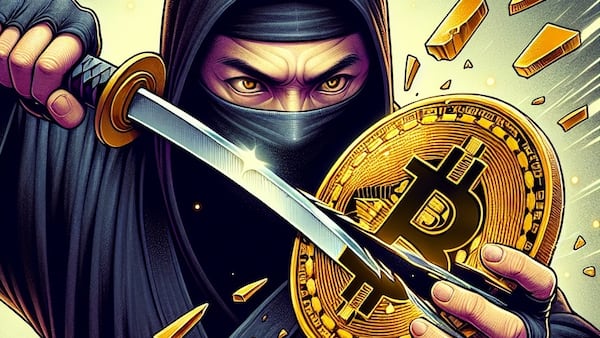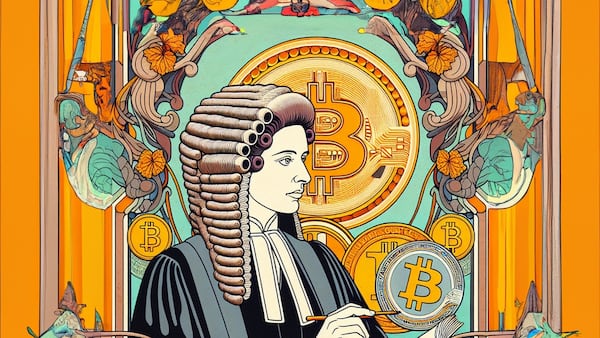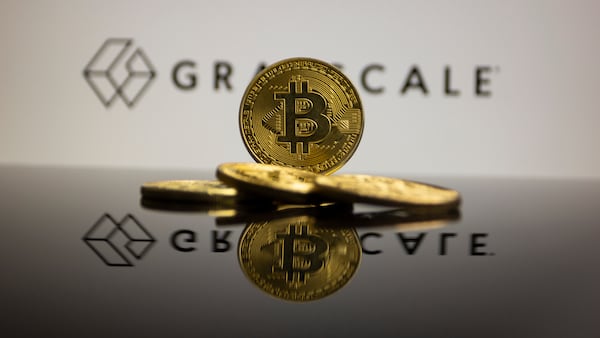- A few names continually come up in theories on who authored the Bitcoin white paper.
- Leading Bitcoin players such as Coinbase and MicroStrategy challenged Craig Wright's claim.
- The unknown inventor of Bitcoin has been quiet since 2011.
In a decision that concludes one of the stranger and most litigious episodes in crypto history, a British judge ruled Thursday that Craig Wright, an Australian computer scientist, is not Satoshi Nakamoto, the pseudonymous inventor of Bitcoin.
For years, Wright claimed to be the mysterious author of the code that ushered in a new asset class that now sports a market value of $1.4 trillion.
As such, he argued he was entitled to billions of dollars worth of rights to his purported handiwork. And Wright wasn’t shy about firing salvos of lawsuits against anyone who dared dispute his claims.
A vigorous challenge
Fearful Wright’s campaign would distort Bitcoin’s proposition and unfairly punish developers with massive legal costs, leading crypto players joined forces to vigorously challenge his claim and establish once and for all that Wright isn’t Satoshi.
In 2021, a group called Crypto Open Patent Alliance, or Copa, sued Wright in the UK to stop him from asserting ownership of Bitcoin’s white paper. The coalition includes Coinbase, Jack Dorsey’s Block, and MicroStrategy, among other leading Bitcoin institutions.
Now a judge has ruled in favour of Copa after hearing hours of testimony from Wright and other witnesses.
“The evidence is overwhelming,” Justice James Mellor of the UK High Court said today at the end of a six-week civil trial in London. “Dr. Wright is not the author of the Bitcoin White Paper.”
While Mellor’s decision closes one chapter in the saga of Bitcoin’s creator, it’s also poised to rekindle the search for a solution to the greatest mystery in finance — who or what is Satoshi Nakamoto?
Mr. Wright is not Satoshi. The Court has just ruled definitively and without qualification. We are grateful that the rule of law has again prevailed.
— paulgrewal.eth (@iampaulgrewal) March 14, 2024
Bitcoin’s history
The story begins in 2009 when someone possessing considerable code writing and computer science gifts posted a prospectus on the P2P Foundation website under the pseudonym Satoshi Nakamoto.
Satoshi interacted with several developers who aided Bitcoin’s early refinement and growth. Then, in April 2011, Satoshi sent a final email.
Since then, the industry has puzzled over Satoshi’s identity. A number of theories have circulated over the years.
Was Satoshi an individual or a collective? Was Satoshi waiting for some opportune time to declare an identity or was the inventor content to remain anonymous forever?
In the meantime, the crypto community has continued to play the mother of all guessing games.
Here are some of the people who have been considered contenders:
Hal Finney
Hal Finney was a cryptographer and game and software developer.
According to crypto education site nakamoto.com, he was an early member of the Cypherpunks, an online group of cryptographers focused on activism related to privacy-based technologies.
Cypherpunks such as Nick Szabo and Adam Back contributed to Bitcoin’s development and have developed other crypto projects.

Inspired by an essay written by Szabo, Finney created “Reusable Proof-of-Work (RPoW),” the consensus method that would inspire Bitcoin’s design, Proof of Work, a method used to verify transactions on the Bitcoin network.
Finney was the first to reply to the Bitcoin white paper, the first person to download the software, and the second miner after Satoshi to verify transactions.
“I mined block 70-something,” Finney wrote in a 2013 post on the Bitcointalk forum, “and I was the recipient of the first Bitcoin transaction when Satoshi sent 10 coins to me as a test — I carried on an email conversation with Satoshi over the next few days, mostly me reporting bugs and him fixing them.”
Theories that Finney’s declining health may explain why Satoshi disappeared from the Web in 2011 have long circulated.
Finney’s publicly available correspondence with Satoshi is one of the primary sources of knowledge about the mysterious originator.
In 2009, Finney was diagnosed with ALS, an incurable motor neuron disease. But he persisted in continuing his work on Bitcoin even as he lost his ability to type.
Finney denied he was Satoshi in interviews with Forbes magazine in 2014.
Theories that Finney’s declining health may explain why Satoshi disappeared from the Web in 2011 have long circulated. Finney died in 2014.
Nick Szabo
Born in Hungary and raised in the US, computer scientist Nick Szabo joined the Cypherpunks in the early 1990s.
Some of his early work in cryptography was on David Chaum’s Ecash, one of the first attempts to build a global digital currency.

Problems with Ecash’s centralised model inspired Szabo to create Bit Gold, which laid the groundwork for Bitcoin, as noted by Satoshi in a 2010 forum post.
Several analyses of Szabo’s writing style have drawn parallels with Satoshi’s. So, too, was his 1998 invention of timestamped databases, which resemble the immutable ledger concept at the core of Bitcoin’s blockchain.
Szabo publicly denied being Nakamoto after the New York Times cited several cryptographers who deemed him the most likely individual.
Adam Back
Adam Back is the CEO of Blockstream, a blockchain technology company, and one of the early Cypherpunks.
Back invented Hashcash, a Proof of Work system that aided the creation of Finney’s RPoW and Bitcoin.
Created to combat the rising threat of spam emails, Hashcash tracked computer processing effort to filter out mass emails.

While composing the Bitcoin white paper, Satoshi contacted Back and cited Hashcash in the published result.
Some crypto community members claim Back’s creation of Hashcash shows he has the proper skill set to create Bitcoin. In 2020, Back denied he is Satoshi.
He has also tweeted that Craig Wright is not Satoshi, and Back testified against Wright in the Copa trial in February.
Dorian Prentice Satoshi Nakamoto
In 2014, Newsweek magazine reported that a California resident and computer scientist named Dorian Nakamoto was the creator of Bitcoin.
The story made headlines around the world.
When asked if he was the author of Bitcoin, Dorian Nakamoto told the magazine, “I am no longer involved in that, and I cannot discuss it. It’s been turned over to other people. They are in charge of it now. I no longer have any connection.”
After publication, Nakamoto denied working on Bitcoin, citing his family’s thrifty lifestyle and lack of a computing job around 2008.

While few believe Dorian is the real deal, he has become the de facto face of Bitcoin, and his likeness is the subject of numerous memes and Bitcoin-related social media profiles.
Tyler Pearson is a junior markets correspondent at DL News. He is based out of Alberta, Canada. Got a tip? Reach out to him at ty@dlnews.com.




